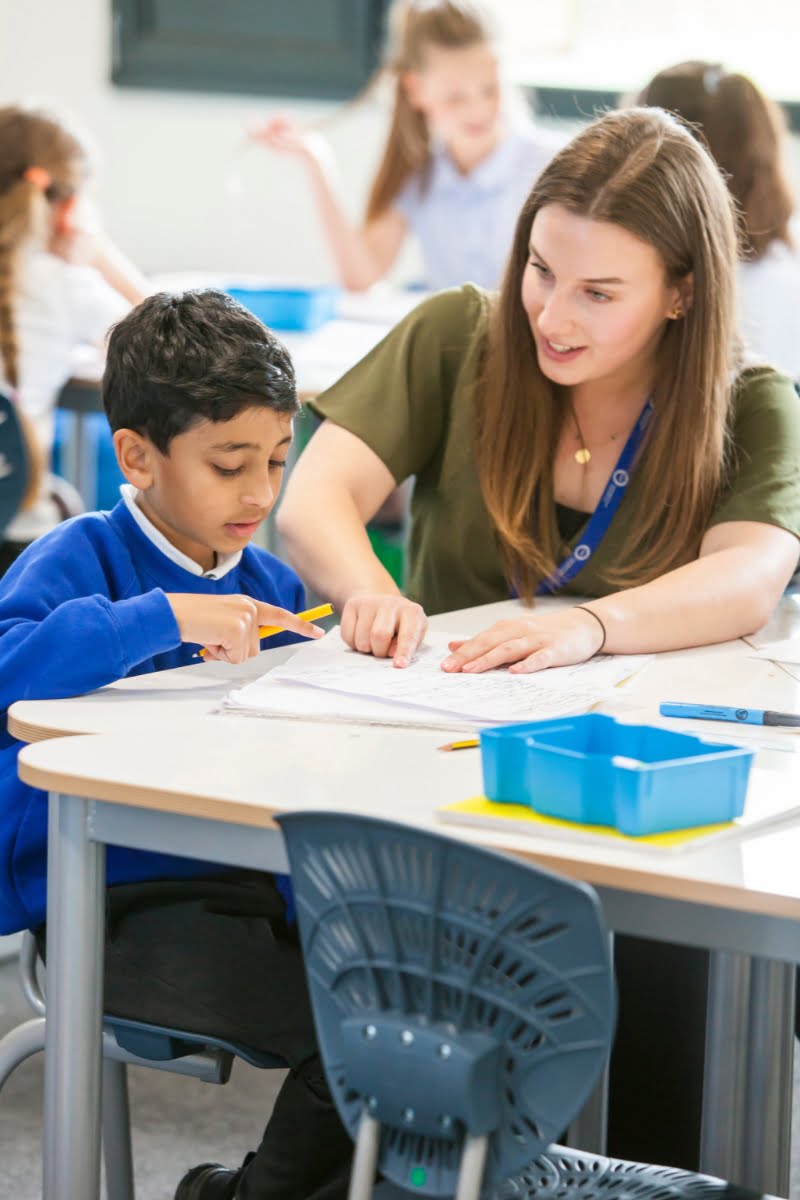Driving pupil progress through design
How staff transformed spaces for learning at Trumpington Park Primary School.
“From the children’s perspective this project has brought ownership and a sense of value to their own learning. It has impacted on their engagement, enjoyment and long-term memory”
Mel Shute
Trumpington Park Primary School
Driving pupil progress through design
In 2020 our ground-breaking global pilot study enabled staff at a Cambridge primary to remodel their classrooms around their educational vision. Trumpington Park Primary staff worked through a six-stage design framework with experts behind Planning Learning Spaces, the seminal guide to optimising school design for learners.
The results? Better engagement, independence, collaboration – and double the academic progress.
Overview
Trumpington Park Primary School first opened its doors in 2017. Staff had a clear shared vision: learning should be driven by enquiry and pupils should develop independence and ownership of their work through collaboration. As headteacher Mel Shute put it, teaching should be about “allowing chances for the enquiry and research to come from the children rather than the teacher.”
But the new building, while impressive, had not been designed around these principles – and, particularly as a teaching school within the Cambridge Primary Education Trust, this was important to address.
“Ultimately, we still had the inevitable standard size and shape classrooms,” explained Mel. “We wanted to transform these spaces into inspirational learning environments – ways that were innovative and cost-effective.”
So, when we invited the school to join an international pilot project for Planning Learning Spaces in Practice (PLSiP), staff seized the opportunity to translate their educational vision into reality.
Challenges
Like any local school, pupils at Trumpington Park Primary School have a variety of diverse needs. Headteacher Mel Shute knew that the new building’s standard design meant it was out of kilter with her school’s vision for teaching and learning for all pupils.
Space was generous, but before the PLSiP project it was not being used effectively. Classrooms were a single undifferentiated space where noise would get in the way of quiet, independent work.
Collaboration and concentration, cornerstones of the school’s ethos, struggled to co-exist in the same space – and there was a particular need to increase collaborative learning after COVID lockdowns. With rigid, fixed furniture, the existing design format meant lessons risked being too teacher-led.
“You look at a classroom and you take it as it is, particularly in a new build,” Mel Shute comments. “This project has made us look at that space afresh, to go in with a different pair of glasses – and that has been refreshing.”
It was time to translate the school’s educational values into practice.
“We know the impact learning environments have on educational outcomes, yet the majority of school classrooms are over 40 years old and even new builds fail to learn the lessons of recent research”
Terry White
Co-Author of Planning Learning Spaces and Co-Director of PLSiP
Solutions
Our PLSiP Design Framework guided Trumpington staff through six stages of reflection and transformation – with the spotlight on a focus Year 4 classroom.
Phase 1 of consultation workshops began with the school’s development plan and its individual vision and values. To reshape their learning spaces meaningfully, staff reflected on their current teaching practice and how a different use of space would enable it to change.
Phase 2 was physical implementation of changes, with analysis of results by Professor Peter Barrett, co-author of Clever Classrooms. This included:
- Concept design – pupil-centred learning and flexible group sizes
- Learning zones – study zones for higher concentration and SEN support, an ICT area, more flexible central spaces for collaboration and a comfortable floor-based thinking space
- Furniture – innovative prototyped furniture, including moveable triangular tables with write-on and wipe-off surfaces, taller tables enabling pupils to stand, round tables and flip tables that converted into display boards for groups to share their learning with adults and peers
- Fixtures – large write-on walls for pupils to develop and record their ideas and share with peers
“The PLSiP process has without doubt led to a transformation in the Year 4 learning environment. It is underpinned by a re-evaluation of the pedagogy and teaching practice to align more directly with the ethos of the school”
Professor Peter Barrett
Researcher in school design and Co-Author of Clever Classrooms
Results
The transformation at Trumpington Park Primary School went beyond physical changes.
The Year 4 pupils’ average combined progress in reading, writing and maths doubled when learning environment changes were implemented in 2020-21 (compared to the previous academic year). In contrast, the combined progress of a different control class reduced from 0.8 to 0.7 points in the same two-year period.
During the project the school also saw:
✔ Greater pupil independence
✔ More successful enquiry-based learning
✔ Less conflict
✔ A more developed sense of ownership
✔ Higher engagement through pupil voice
✔ Greater integration of SEND pupils with specialist teaching possible in the same room
✔ Better concentration
✔ More effective collaboration
✔ Less teacher talk and teacher-led learning
✔ Greater flexibility around pupil groupings
✔ Less classroom set-up time
The school is now in a ‘Strategy for Change’ phase, using the PLSiP framework to transform more classes in Key Stage 2. Armed with ideas and confident about further change, staff also plan to develop tailored learning spaces for design technology, computing, robotics and art.
“This next stage takes our thinking into the creative and STEM-based areas of the curriculum,” explains Mel Shute. “Success in these subjects depends on resilience, problem-solving and collaboration to achieve a common goal – the perfect next challenge for the PLSiP approach.”
“My way of teaching has adapted. Now I think of my learning space as different zones that allow learning to happen in various ways”
Emma Norman
Trumpington Park Primary School
Download this case study
You can download a pdf copy of this case study using the download arrow on the top left next to the online case study below.






